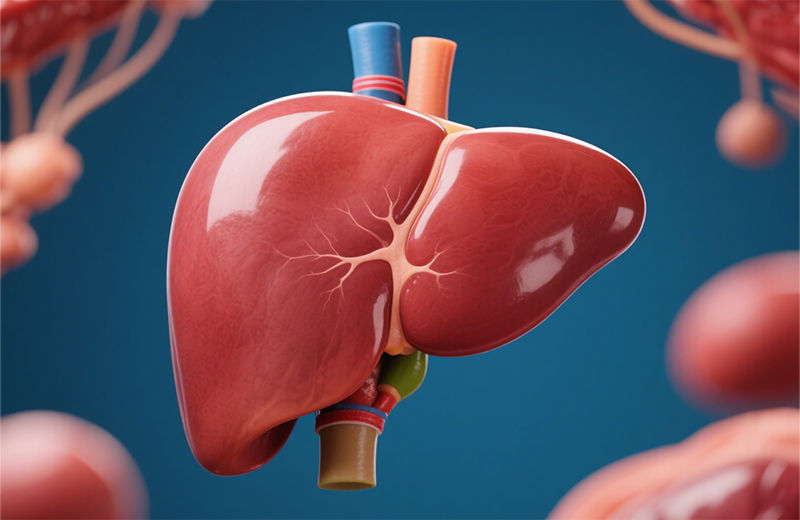The liver, often referred to as the body’s “central metabolic factory,” is responsible for converting nutrients from food into glucose, storing fats for future energy needs, and detoxifying harmful substances. However, over one-third of the global population is currently afflicted with liver diseases related to metabolic dysfunction, particularly Metabolic dysfunction-associated steatotic liver disease (MASLD). In China alone, over 200 million people suffer from fatty liver, with the disease increasingly affecting younger demographics. These conditions act like ticking time bombs, silently threatening liver health and potentially leading to cirrhosis or even liver cancer.
In light of this global challenge, researchers around the world have intensified their search for solutions. Traditional treatments have proven limited, but regenerative medicine offers renewed hope. A recent breakthrough by Japanese scientists has made headlines: they successfully cultivated liver organoids using primary human hepatocytes. Published in the latest issue of Nature, this achievement signals a new era for drug development, disease modeling, and regenerative therapy.

Breakthrough in Organoid Technology: Cultivating Liver Organoids
A collaborative team led by Keio University in Japan began their study with frozen adult hepatocytes extracted from patients. They discovered the remarkable role of a cytokine called Oncostatin M (also known as leukemia inhibitory factor), which is typically involved in inflammation signaling. In this study, Oncostatin M was found to significantly enhance cell growth when applied to the frozen liver cells, essentially hitting the “fast-forward button” on cellular proliferation and organoid formation.
These liver cells were induced to form organoids and sustained robust growth, achieving nearly one million-fold expansion over three months. Even after six months, the organoids retained strong differentiation potential. To endow these organoids with full liver functionality, the researchers developed a novel hormone-based differentiation technique. This innovation acted like a “function switch,” prompting the organoids to perform key liver roles: producing glucose, synthesizing urea for nitrogen waste removal, generating bile acids for fat digestion, producing cholesterol to support cell membranes, and creating triglycerides.
One standout finding was the high level of albumin secretion, used to maintain osmotic pressure in blood, achieving rates comparable to those of native liver cells. The organoids also developed miniature bile duct networks, mimicking the intricate structure and functionality of real liver tissue—an astonishing milestone in life sciences.
Broad Applications Across Fields: A New Chapter in Medicine
To assess practical viability, the team conducted animal trials. Transplanting the liver organoids into mice with liver dysfunction, they observed that the organoids quickly integrated with host tissue and began replacing damaged cells, ultimately restoring liver function. This not only advances the field of liver regeneration but also opens new possibilities for regenerative medicine.
Currently, liver transplants remain a last-resort option for end-stage liver disease, yet donor shortages and the rapid degradation of liver tissue post-harvest severely limit success. Attempts to freeze liver cells for future use have historically shown low viability. This new approach—revitalizing frozen cells into organoids—offers a revolutionary alternative, potentially transforming how regenerative therapies are conducted.
Still, Professor Toshiro Sato of Keio University emphasized that scaling up the process is essential for human application. Cultivating liver organoids in the billions or trillions will be necessary due to the liver’s vast complexity compared to that of mice. Nonetheless, success in this endeavor could offer life-saving hope for countless patients awaiting liver transplants.
In the pharmaceutical realm, the value of these organoids is equally immense. Due to species-specific differences in liver function, human hepatocytes are typically required for drug toxicity testing. However, these cells survive only a few days in vitro and cost between ¥100,000 and ¥300,000 per vial. Furthermore, their variable functionality undermines experimental consistency.
In contrast, liver organoids offer stable, long-term viability in lab environments, making them a cost-effective and reliable model for drug development. This could reduce testing costs, streamline research workflows, and accelerate the delivery of new liver disease treatments to patients.
Organoids also serve as superior disease models. In this study, the organoids were able to autonomously produce lipids, and upon treatment with MASLD drugs, those lipids were significantly reduced. This behavior more accurately simulates the disease’s real mechanisms compared to conventional methods involving artificial lipid injections. The team also successfully used gene editing to replicate ornithine transcarbamylase deficiency—a rare urea cycle disorder—marking a leap forward in genetic liver disease modeling and research.

Looking Ahead: The Path of Science is Long but Hopeful
Looking to the future, Professor Sato noted that the next challenge lies in massively scaling up the production of liver organoids. Though significant strides have been made, current technologies still fall short of clinical demand. His team plans to refine culture conditions and explore new techniques to achieve efficient, large-scale cultivation.
Moreover, the researchers intend to incorporate other liver cell types into the organoids to create a more comprehensive model. The liver comprises a complex network of multiple interacting cell types. Including these in future organoids will make them more physiologically representative and enhance their utility in tackling diverse liver disorders.
This pioneering research offers renewed hope for the treatment and understanding of liver diseases. While the road ahead is filled with scientific hurdles, global researchers will continue to collaborate and innovate, moving steadily toward breakthroughs that could transform healthcare and save lives.












